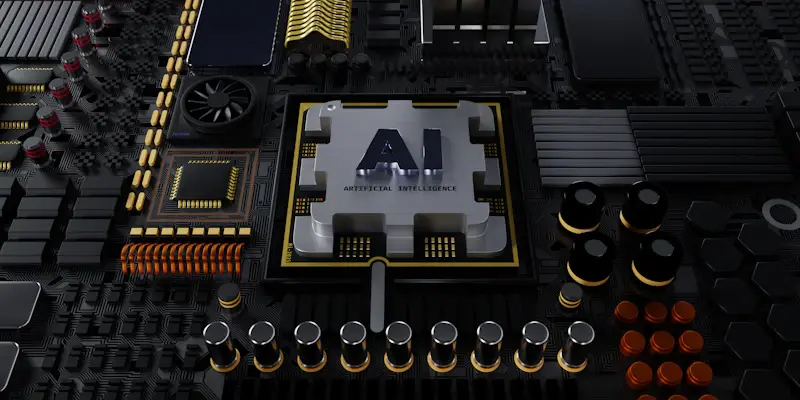In an era marked by rapid technological advancements, the introduction of NVIDIA’s AI-powered tool, G-Assist, is poised to reshape the PC optimization landscape. This report delves into the current trends, projections, and potential market impact of G-Assist, providing a comprehensive analysis that underscores its significance in transforming PC performance optimization.
Context and Importance
NVIDIA’s G-Assist, launched at CES this year, leverages a Small Language Model (SLM) to execute optimization tasks using natural language commands. The tool integrates seamlessly with NVIDIA APIs and third-party systems, enhancing PC performance through the adjustment of game settings, GPU overclocking, and peripheral control management. As AI continues to permeate the tech industry, G-Assist stands out as a pioneering tool in the realm of PC performance.
Detailed Examination of Market Trends
Real-Time Performance Monitoring
One of the defining features of G-Assist is its capacity for real-time hardware performance monitoring, offering users access to critical metrics such as FPS, GPU usage, and temperature readings. This data is crucial for gamers and PC enthusiasts who seek to maintain optimal performance levels. In the competitive gaming market, where milliseconds can make a difference, the ability to monitor and adjust performance dynamically is invaluable. This trend points to a growing demand for real-time insights, which G-Assist adeptly meets, setting a new standard for hardware monitoring solutions.
Moreover, the increasing complexity of modern games and their demands on hardware have catalyzed the need for more sophisticated monitoring tools. G-Assist’s real-time capabilities ensure users can preemptively address potential issues, minimizing downtime and enhancing the overall gaming experience. This proactive approach to performance monitoring is indicative of broader industry trends toward predictive analytics and preventive maintenance, further reinforcing the tool’s market relevance.
Comprehensive System Optimization
G-Assist’s AI-driven optimization extends beyond simple monitoring, offering instant diagnostic reports and tools for system optimization. The ability to resolve hardware and software issues swiftly through natural language commands highlights the trend toward user-friendly interfaces and simplified tech interactions. As users increasingly prioritize convenience and efficiency, G-Assist’s intuitive design meets these expectations, positioning it as a pivotal tool for both novice and experienced users.
The move towards comprehensive system optimization reflects a broader market shift toward holistic PC management solutions. Users are no longer content with piecemeal optimizations; they seek integrated solutions that offer end-to-end performance enhancements. G-Assist, with its multifaceted capabilities, addresses this need by providing a one-stop solution for PC optimization. This integration of advanced AI with practical utility underscores a significant market demand for cohesive optimization tools.
Current Accessibility and Future Enhancements
Activation and User Requirements
To utilize G-Assist, users must ensure their systems meet specific requirements, including GeForce RTX 30 series or newer graphics hardware, a minimum of 12GB of VRAM, and the latest CPU technology. Additionally, updated GeForce drivers are essential for optimal functionality. Users can activate G-Assist through the NVIDIA app’s “Discover” section and access it using the Alt+G keyboard shortcut. While intensive tasks may marginally reduce system performance, the benefits of streamlined gaming and PC management far outweigh these temporary impacts.
This accessibility framework aligns with the broader industry trend toward making advanced technologies available to a wide user base, ensuring that both high-end and mid-range users can benefit from AI-driven tools. The strategic inclusion of G-Assist within the NVIDIA ecosystem also indicates a trend toward tighter integration of hardware and software solutions, enhancing overall user experience and system performance.
Projections and Strategic Insights
As an experimental feature, G-Assist is set to undergo further enhancements, particularly in integrating additional third-party software connections and expanding user control commands. This developmental trajectory aligns with NVIDIA’s broader strategy to embed AI deeply into gaming and computer optimization technologies. Continuous updates and new functionalities can be expected, reflecting NVIDIA’s commitment to innovation and maintaining its competitive edge in the market.
Projecting into the future, the integration of more advanced AI capabilities will likely lead to even more sophisticated optimization tools that can anticipate user needs and adapt dynamically. This evolutionary path suggests a market trend toward increasingly intelligent and autonomous systems that reduce the need for manual interventions, driving demand for AI-driven solutions like G-Assist.
Key Implications and Future Considerations
The findings in this market analysis highlight G-Assist as a game-changer in AI-driven PC optimization. By offering real-time performance monitoring, comprehensive system optimization, and user-friendly engagement, G-Assist sets a new benchmark for PC management tools. As NVIDIA continues to enhance this feature, the broader market can anticipate significant advancements in AI integration, pushing the boundaries of what’s possible in gaming and computing technologies.
Moving forward, strategic considerations should focus on leveraging G-Assist’s capabilities to develop even more cohesive and predictive optimization solutions. As user expectations evolve, the demand for intuitive, efficient, and integrated tools will only grow, making continuous innovation crucial for staying ahead in this competitive landscape.

